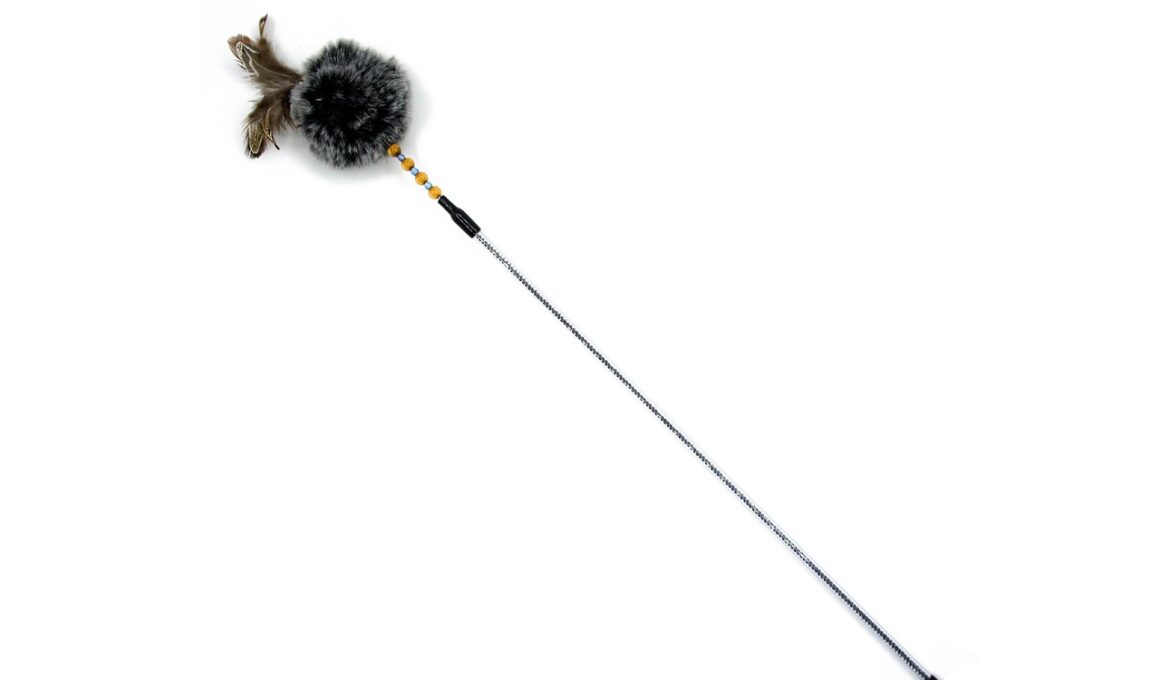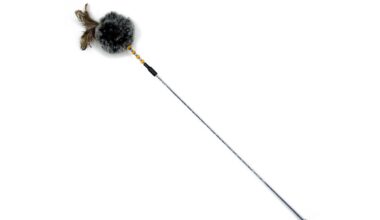How to Store Cat Toys to Keep Them Safe and Hygienic
Ensuring the safety and cleanliness of your cat’s toys is crucial for promoting health and well-being. A well-organized storage system not only makes it easier to find your pet’s favorite items but also prevents harmful bacteria from thriving. Begin by regularly inspecting each toy for any damages or hazards that could pose a risk to your cat. Choose a dedicated storage location such as a container or a basket that is easily accessible yet safe from contaminants or dirt. Consider using breathable bags to help keep plastic toys from sweating, thereby preventing moisture accumulation. Avoid placing toys in damp areas as this can accelerate decay and build-up of molds. Remove any toys that display signs of wear and tear, as these can harbor hidden dangers. It’s also important to clean the toys frequently to remove dirt and bacteria. Soak hard toys in warm, soapy water, while soft toys can generally be machine washed. This active participation not only maintains hygiene but also extends the lifespan of your cat’s toys.
Storage is only effective if done systematically. Organize toys by type or size for quick access. For instance, you can keep soft toys in one container, balls in another, and interactive toys in a separate space. Designating a specific area for each category helps you and your cat easily find the desired item. Labeling the containers can further assist in maintaining order. Additionally, using clear boxes allows quick visibility of what’s inside without needing to rummage. Ensure that toys are stored in a place where your cat can’t accidentally knock them down or create a mess. A shelf or a cabinet that can be closed is an excellent choice for safety. Avoid leaving toys on the ground for extended periods, as this may invite dust accumulation. It’s a great practice to rotate toys, exchanging them periodically to keep things fresh and exciting for your cat. This strategy will not only keep the environment tidy but also fosters a sense of curiosity in your furry friend. Your diligence in establishing organizational habits ensures a safe and pleasant play experience.
Types of Cat Toys that Require Special Storage
Various types of cat toys may require different storage considerations. For example, battery-operated toys should be stored away from moisture to prevent corrosion of batteries, which can be hazardous. Similarly, toys made of multiple components, like those containing strings or ribbons, may pose choking risks if pieces become detached or frayed. Always inspect these toys frequently before each use. Soft fabric toys or stuffed animals should ideally be washed regularly to maintain hygiene. Avoiding encapsulated materials can also save you from potential issues, as these can be harder to clean and may harbor bacteria. Interactive toys, which require supervision, should be stored in a specific bin so they can be easily put away after play sessions. Create a routine for toy care, including thorough inspections and cleaning schedules. Avoiding clutter on the floor can help eliminate risks of accidents. Properly storing toys ensures your cat enjoys its playtime without health concerns related to its toys. By adhering to a thoughtful storage method, you show love and consideration for your cat’s well-being.
When organizing cat toys, implementing a cleaning routine is fundamental to your cat’s health. Start by scheduling periodic deep cleans, perhaps every few weeks or more frequently if necessary. During this time, check for damages that could lead to injury and wipe down hard toys with an antibacterial solution. Soft toys that can withstand washing should also be washed regularly to remove allergens, dust mites, and any leftover debris from playtime adventures. This proactive cleaning approach protects your cat from respiratory issues or infections. In addition, consider involving your children or family members in the cleaning process, educating them about the importance of hygiene for pets. The fun element of cleaning can instill a sense of responsibility in them. Consider using natural cleaning products to avoid exposing your cat to harmful chemicals. These products can eliminate unhealthy bacteria while being environmentally friendly. Finishing up with a quick inspection of the storage area ensures that everything is in place. Emphasizing cleanliness will encourage a healthier environment where your cat feels secure and thrives.
Safety Precautions for Storing Cat Toys
Always prioritize safety when storing cat toys. Avoid areas that are prone to moisture like basements and bathrooms. Opt for dry, clean places that don’t have sudden temperature changes that could degrade plastic materials in toys. Understand that ventilation plays a crucial role in reducing humidity. Good air circulation prevents the growth of harmful mold or mildew. Avoid putting toys near hazardous materials or equipment that could inadvertently cause harm. Sudden exposure to external chemicals can lead to health problems for your cat. Additional storage considerations include storing the toys above ground or in cabinets out of reach for curious cats looking for mischief. This practice prevents them from accessing unsuitable toys when unattended. Use bins or containers with secure lids to limit access to potentially harmful small parts. Whenever purchasing new toys, check reviews for safety certifications and guidelines. Understanding the manufacturer’s safety recommendations ensures a safer playtime experience. Your diligence in safeguarding their belongings translates directly into their overall happiness and health, making your home a cat-friendly oasis.
Maintaining a record of the condition of your cat’s toys is a wise idea. Keeping track of when toys were last cleaned or inspected can provide insights into when to conduct future checks, ensuring consistency in your care practices. Documenting any wear and tear allows you to manage replacements before they impact your cat’s playtime negatively. You can use a simple notebook or a digital app to track this information easily. Additionally, integrate your cleaning schedule into your calendar as a helpful reminder. Creating a visual schedule allows everyone involved in your pet care routine to stay informed. Remember to involve your cat in the selection of toys—a playtime outing can help gauge their interests. Frequent toy change-ups can keep them engaged. Furthermore, research on safety warnings can add another layer of assurance when selecting toys. Understanding key indicators of safety can give you valuable insights. It’s all about balancing cleanliness with enjoyment while keeping your cat’s play area free of debris. Taking these initiatives ensures that your cat will have a fun, safe, and hygienic play environment.
Storage Solutions for Cat Toys
Finally, exploring storage solutions can enhance your home’s organization while providing a safe environment for your cat’s toys. Consider investing in charming, decorative storage bins that double as home decor to maintain aesthetic appeal. Bins with lids can offer protection while being visually pleasing. Another option is to use under-bed storage for seasonal toys, ensuring easy access but keeping them neatly out of sight. Selecting sturdy materials for bins ensures longevity and security, allowing you to stack them without fear of collapsing. With creativity, even old furniture can be repurposed; turning a side table or chest into a storage solution can be functional and stylish. Remember to choose a storage unit that is easily accessible to you but out of reach for your pets. If you have large toy collections, consider grouping similar items together for convenience during play. Assessing the available space in your home can lead to innovative storage ideas. A well-planned system can streamline the process of keeping your cat’s environment clean, optimized, and attractive.


